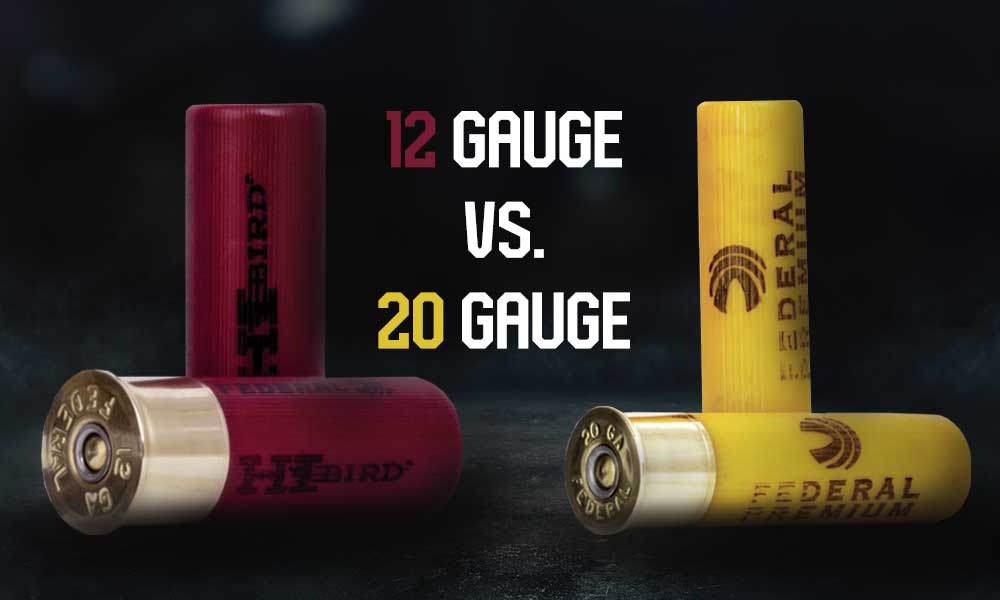
Last Updated on
While shotguns are straightforward, simplistically built firearms, the topic of shotgun ammo is quite baffling for most beginning shooters. Getting clear about the definition of the gauge can already give you a hard brainwork time, and this is only a teeny-tiny fraction of what you need to know to make the right choice.
Since 12 gauge and 20 gauge shotguns are the most popular and versatile firearms, and you’re probably opting for one of them, we prepared this ultimate guide that explores how these designs are different and explain which one is best for your needs. Enjoy reading!
Table of Contents
What Does Gauge Mean
A Note on Reading Shotgun Shell Boxes
Power Comparison
Recoil Comparison & Shootability
Accuracy, Range & Pattern Density
Applications
Hunting
– Upland Bird Hunting
– Waterfowl Hunting
– Turkey Hunting
– Mid- & Big-Game Hunting (Deer Hunting)
Self-Defense/Home Defense
Shooting Sports
What Does Gauge Mean, For God’s Sake
We bet your face was like “What the heck” when you read the official definition of gauge for the first time. That’s OK; you are not alone. But we have to bring you through it one more time. Gauge means the number of balls, having a diameter equal to the bore, you can make from 1 pound of lead. 12 gauge means 1 pound of lead can produce twelve .727-inch balls. It also means one ball weighs 1/12 pound. And that it is larger than a 1/20-pound lead ball (.615-inch diameter).
The truth is you don’t need to understand the definition because it’s based on an outdated measuring system used by our ancestors that needed to know how many projectiles they would make. You only need to understand that the bigger the gauge number, the smaller the shotgun’s bore. That leads us to 12-gauge shotguns having larger bores than 20-gauge ones. The exception is the .410 shotgun, which is technically a 67 gauge.
A smaller gauge means a stouter shotshell. So, all else things equal, a 12-gauge shell contains more powder and shot pellets than a 20-gauge shell. More shot also means a heavier payload of projectiles. We’ll need that later.
A Note on Reading Shotgun Shell Boxes

Besides gauge, a box of shotgun ammo has quite an amount of other information that may intimidate a beginner, especially if one tries to compare 12ga vs. 20ga. So let’s quickly break it down.
Length. Every shotgun has a chamber of a particular length, typically 2¾, 3, or 3½ inches. Obviously, the longer the shell, the more projectiles it packs, and the heavier the payload.
Shot Size. There are two shot types – birdshot and buckshot. They use different size charts with numerical and alphabetical markings, but generally, the smaller the shot size number, the larger the shot. In the world of birdshot, shot size varies from #12 being the smallest to BB being the largest. Buckshot is measured from #4 to #000. Non-toxic (steel) birdshot size is expressed from #6 to T and F. We’ll discuss different uses later.
Shot Weight. The weight of the total payload is expressed in ounces. The heavier the load, the more recoil you’ll get and the more knockdown power you’ll achieve.
Velocity. Expressed in feet per second, it’s the speed of the shot when it exits the muzzle. Again, the higher the velocity, the stouter the recoil and the further pellets travel.
Dram Equivalent. You rarely see this number on ammunition boxes because it’s an outdated method of expressing velocity from the time people used black powder. Use the fps number and ignore dram eq.
12 Gauge vs. 20 Gauge: Power Comparison
As you’ve just learned, a twelve-gauge shell has much more volume to fit projectiles and propellant than a twenty-gauge shell. But what really matters when we talk about power comparison of 12 gauge and 20 gauge is only shot count and mass, not the amount of powder and muzzle velocity. Why is that?
You need more powder to push heavier projectiles at the speed of lighter projectiles. 12ga shells naturally have more powder. That explains why we often see comparable velocity numbers on the boxes with 12- and 20-gauge ammo (you will find magnum ammo loaded for higher velocity, though). Let’s compare the Federal 12ga and the Winchester 20ga ammo.
| Projectile Type | Total Proj. Weight | Muzzle Velocity | |
| Federal 12GA | #5 | 1¾ oz | 1,200 fps |
| Winchester 20GA | #5 | 1¼ oz | 1,185 fps |
Considerable difference in total projectile weight, 765.6 vs. 546.8 grains, virtually doesn’t affect muzzle velocity because of the powder amount.
However, power is related to muzzle energy. We know from the formula for kinetic energy that, for a constant velocity, the energy is doubled if the mass is doubled. So a 12-gauge shotshell having a heavier projectile payload is more powerful than a 20-gauge shell.
12 Gauge vs. 20 Gauge: Recoil Comparison & Shootability
How much recoil you will feel depends on several factors. The most important include projectile weight, projectile speed, and weapon weight. Generally speaking, a 12-gauge shell will produce a stouter recoil because of more powder and total projectile weight. However, we should also take into account that 12ga shotguns typically are heavier than 20ga, so there’s more gun to soak up recoil energy. Compare these four shotguns from CZ and Mossberg by weight.
| Model | Type | Barrel Length | Weight |
| Mossberg 500 12 GA | Pump | 28″ | 7.5 lbs |
| Mossberg 500 20 GA | Pump | 26″ | 7 lbs |
| CZ Redhead Premier All-Terrain 12 GA | Over-Under | 28″ | 7.9 lbs |
| CZ Redhead Premier All-Terrain 20 GA | Over-Under | 28″ | 6.9 lbs |
Nonetheless, 20-gauge shotguns are still preferred for young and recoil-sensitive shooters. A less recoiling 20ga has two serious advantages: shooting comfort (a less bruised shoulder and a lighter gun) and faster, more accurate follow-up shots.
12 Gauge vs. 20 Gauge: Accuracy, Range & Pattern Density

When the shot column exits the muzzle, it doesn’t behave like a bee swarm. Instead, the column gradually disperses as it moves downrange. Muzzle velocity influences how far projectiles will fly, but since both 12ga and 20ga shells are capable of developing the same velocities, we won’t consider it.
Again, it’s the number of projectiles that matters here. When loaded with pellets of the same size, a 12ga shotshell will contain more pellets, which translates into a denser shot pattern. A denser pattern also means more shot is making its way to the target and a higher chance to hit the target at longer ranges.
By the way, shotgunners often use chokes. Screwed into the barrel, they act like a forcing cone that makes a more compact, tighter shot column as it leaves the muzzle.
The effective range is 40 yards with buckshot, 50 yards with birdshot, and 110 yards with standard slugs fired from a smooth bore. The maximum effective range can be extended to 150-200 yards with sabot slugs and a rifled barrel.
12 Gauge vs. 20 Gauge: Applications
In this part, we’ll discuss which gauge is better for hunting, home defense, and sports shooting, and which 12 gauge/20 gauge shell types to use.
12 Gauge vs. 20 Gauge for Hunting
Upland Bird Hunting 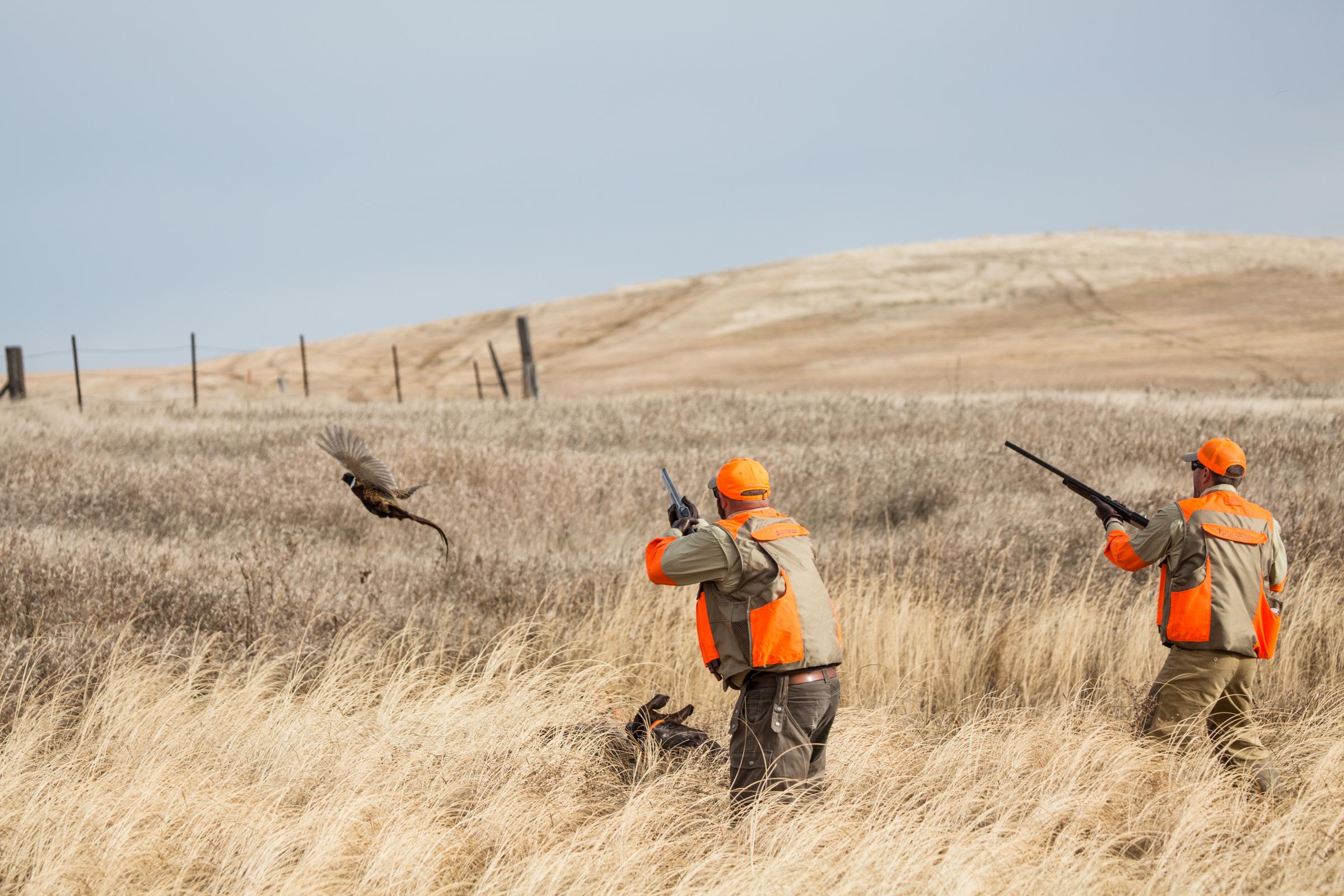
If you want a short answer, a 20-gauge shotgun is better for hunting upland game birds. It’s true for multiple reasons. First of all, as we’ve mentioned, 20ga are lighter-weight firearms. It’s also not unusual for them to have shorter barrels. Less bulk is definitely a plus, considering the nature of upland hunting, where you need to walk long distances with your gun in hand and then make a quick shot when the bird is railed up into the air. If you miss, an accurate and fast follow-up shot is easier to produce with a less-recoiling 20ga shotgun.
Although you absolutely can hunt grouses, pheasants, quails, and other upland birds with a 12ga, many hunters consider it too much. With a denser pattern of a 12ga, the risk of meat damage is high when shooting at close ranges. A 12ga MAY BE a go-to gun for hunting pheasants, especially at longer ranges and later in the season.
But generally, with the right shot choice, a 20ga is the best for all upland birds, from doves and quails to grouses and pheasants. Also, most uplanders don’t use chokes because birds are usually killed at 25 yards max.
Waterfowl Hunting

The law of 1991 requires waterfowlers to use non-toxic shells. They often contain steel pellets, but the snag is that steel is a lower-density metal than lead, which makes them ballistically inferior because they lose momentum over longer distances, and their penetration can be shallower.
The lighter weight of steel pellets can be compensated with a larger pellet size. But it means fewer pellets in the shell. Do you see what we are driving at? 12ga seems a better idea because it allows sending more shot downrange.
One more thing to consider is hardness. Lead is softer than steel, so when fired, it compresses harder, and the pellets sitting closer to the wad get damaged. That results in a wider spread. Steel pellets are harder and don’t compress as easily as the lead, which maintains a tighter pattern up to a certain distance. That’s also the reason many experts advise against full chokes when using steel shells – too much pressure can lead to barrel damage or explosion. Instead, use more open chokes.
Higher hardness is also an advantage when talking about penetration. There’s a much lower chance of steel pellets deforming on impact and getting stuck. Birds may bleed more freely, which is what humane hunting is all about.
Let’s sum up. 12ga is a better option when using larger steel pellets because, with a 12ga shell, you have more chances to hit your target. However, 20-gauge shotguns have become increasingly popular with waterfowlers, partially thanks to the development of bismuth alloy pellets, which are of higher density than steel. So, get a box of bismuth shells and a more full choke, and hunting waterfowl with a 20ga will be successful. Just mind the distance.
Turkey Hunting
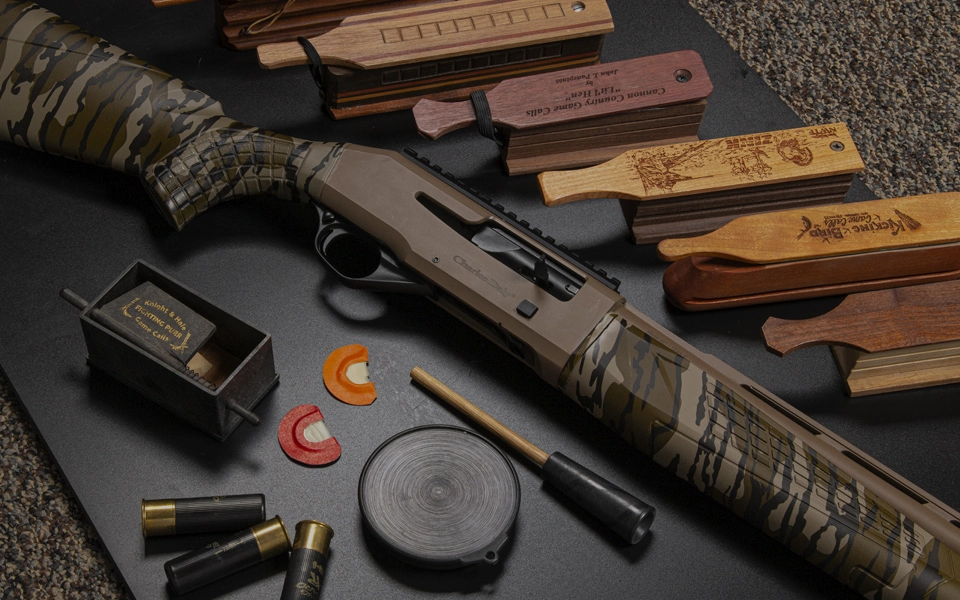
A standard range for shooting a turkey is 30-50 yards. A 12ga shotgun will give you a thicker shot swarm at further distances, again, thanks to a superior pellet payload. A denser pattern is also advantageous when considering the place of aim – the head, neck, or where the neck meets the feathers. The more pellets are sent downrange, the more chances to hit these targets.
With a 20ga shotgun, you need to be closer to your gobbler. But premium Tungsten Super Shot (TSS) shells can extend the 20’s range to that of the 12ga. This type of ammo is expensive, but you’ll be able to use small #9 1½ 20ga shells quite effectively.
Medium & Big Game Hunting (Deer Hunting)
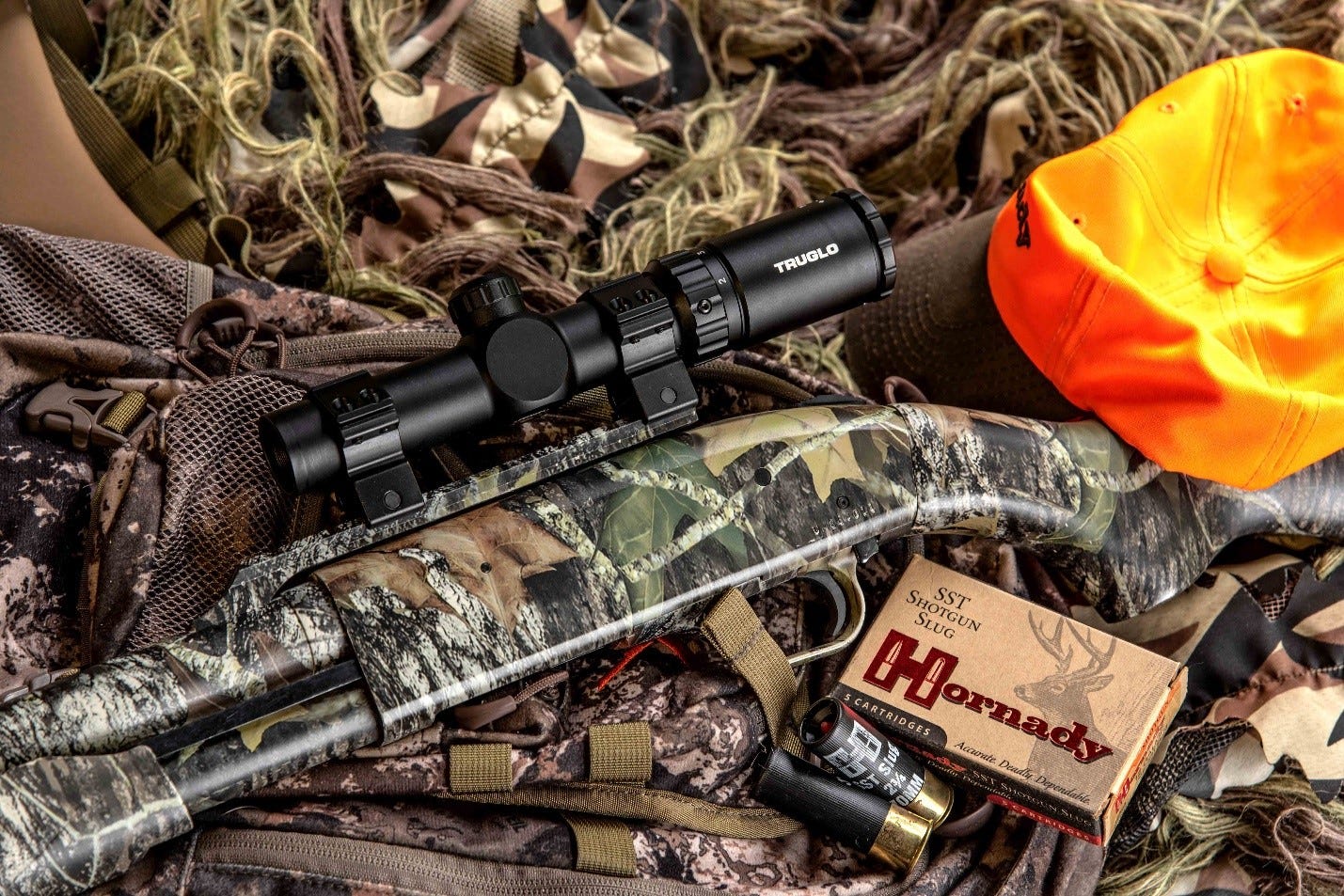
Buckshot or slugs are used for harvesting animals like coyotes, deer, hogs, bears, elk, and so on. A 12ga shell has an increased capacity and can hold buckshot pellets as big as #000. So not only do you get more versatility, but also a denser pattern in general. In contrast, a 20ga shell capacity limits you to #1 or smaller buck pellets.
As for solid projectiles, a full-bore slug of greater diameter (12ga) will create a bigger wound channel. However, chambering a sabot slug, boasting superior ballistics than a standard slug, 20ga becomes an excellent choice.
12 Gauge vs. 20 Gauge for Self-Defense/Home Defense
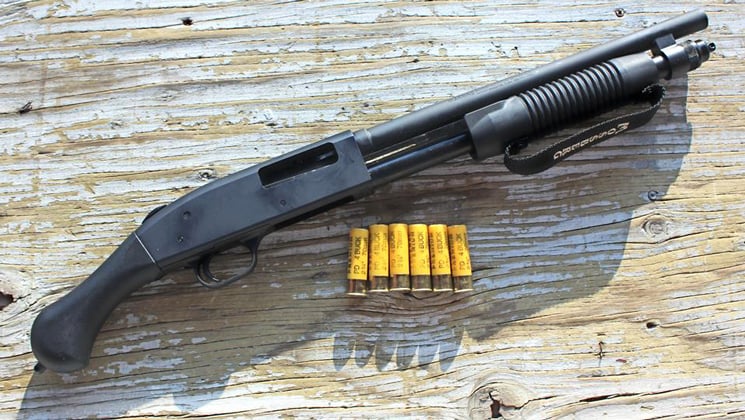
It’s a tricky one. If you’re considering buying a shotgun primarily or only for self-defense, we recommend reconsidering your choice in favor of a handgun or AR-15. It’s especially true if you don’t have much experience with shotgun shells – freedom (versatility of shells) comes with responsibility.
Shotguns are powerful firearms. And if you’re picking your payloads irresponsibly, the risk of over-penetration gets very high. Over-penetration is bad in a personal or home defense situation because you can hit an innocent bystander with a projectile that zipped right through an intruder or went through the wall. For this reason, you can’t use slugs in most cases.
Birdshot is out for slightly different reasons. First off, the pellets are too small to reach the needed depth and inflict sufficient damage. But if you live close to other apartments and homes, pick bigger birdshot pellets and select the right choke, and you’ll be fine penetrating deep enough and not over-penetrating. You must never assume that projectiles won’t go through walls for safety reasons.
Buckshot is an excellent choice if you expect your home-defense engagement to be 8-10 yards and more. 12ga #00 buckshot is a standard law enforcement load widely available for civilians. However, some people feel more comfortable with #4 or #3 buck, while others feel like #1 buck is superior.
If you want to know whether 12 gauge or 20 gauge is best for home defense, the answer is both because their performance at ranges up to 20 yards is quite similar. A tactical 20ga shotgun, however, is easier to maneuver and control.
12 Gauge vs. 20 Gauge for Shooting Sports
Generally speaking, a tighter pattern of 12 gauge makes it a perfect choice for trap shooting, while spread shots of 20 gauge do a great job in hitting consequently launched targets (sporting clays) or targets released from varied angles and stations (skeet).
Conclusion
As you see, 12 gauge boasts better versatility and is better suited for tasks that require longer-range shots and tighter shot patterns. Though less bulky and more maneuverable, 20ga shotguns are more specialized firearms that need fine-tuned ammunition and chokes when used for tasks where 12ga rules.
Don’t be shy to explore our collection of shotguns in 12ga and 20ga. We have everything, from traditional side-by-side hunting shotguns to over-under shotguns for sports shooting to tactical home-defense shotgun models.
Also, read about the best shotguns for home defense here.
FAQs
What caliber is a 12 gauge shotgun?
A 12 gauge shotgun, in terms of caliber, is approximately .73 inches or 18.5 millimeters in diameter.
How does the diameter of a 20 gauge shell compare?
The diameter of a 20 gauge shell is slightly smaller than a 12 gauge, measuring around .615 inches or 15.6 millimeters.
What’s the recoil like on a 20 gauge shotgun?
The recoil on a 20 gauge shotgun tends to be less than that of a 12 gauge, making it a more comfortable option for some shooters.
Which is the most common shotgun gauge?
The 12 gauge is the most common, due to its versatility and power.
What can you hunt with a 12 gauge shotgun?
A 12 gauge shotgun is versatile and powerful enough to hunt a variety of game, from small birds (at a distance) to larger animals like deer.
Is there a “best” shotgun gauge?
The “best” shotgun gauge depends on the individual shooter’s needs and preferences. However, the 12 gauge is often favored for its versatility and power.
How do different shotgun gauges compare?
The main difference between shotgun gauges is the diameter of the barrel, which affects the size, power, and the number of pellets.
What can you hunt with a 20 gauge shotgun?
The 20 gauge shotgun is particularly well-suited for upland hunting. While the 12 gauge might be more effective for hunting game at longer distances due to more power and pellets, the 20 gauge can still be successful in hunting turkeys, ducks, and deer provided that appropriate ammunition is used.
Can a 20 gauge shotgun kill a deer?
Yes, a 20 gauge shotgun can effectively take down a deer, especially at closer ranges. While a 12 gauge shotgun with a full-bore slug can create a larger wound channel, a 20 gauge shotgun can certainly be lethal to a deer when equipped with a sabot slug. Thanks to its superior ballistics compared to a standard slug, a sabot slug makes the 20 gauge an excellent choice for this purpose.
How much recoil does a 20 gauge have?
The 20 gauge shotgun has less recoil than the 12 gauge, making it more manageable for some shooters, especially those of smaller stature or with less shooting experience.
How far can a 20 gauge shotgun shoot?
A 20 gauge shotgun can effectively shoot up to 40-50 yards, depending on the type of ammunition used.
What is the most powerful gauge shotgun?
The 10 gauge shotgun is typically considered the most powerful due to its larger bore diameter and heavier shot load, but the 12 gauge is a close second and more commonly used.


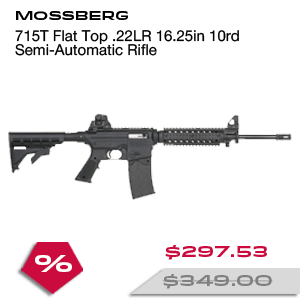
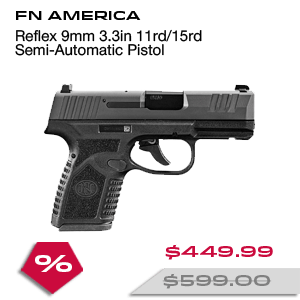
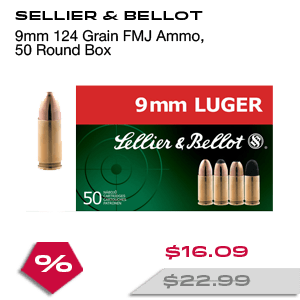

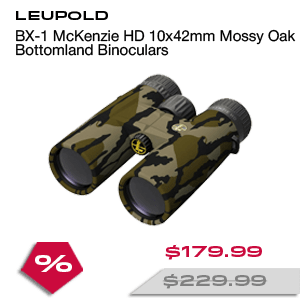





Leave a Reply